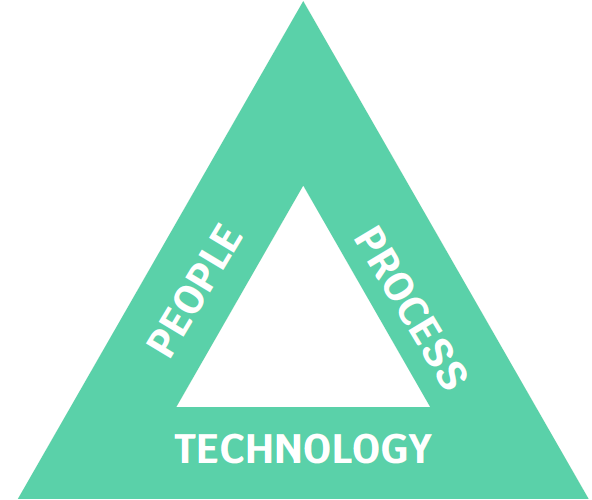Digital transformation is a word that often comes up in boardrooms these days. Browsing through the annual reports of many companies one would find references to companies undergoing “Digital Transformation”.
I have defined digital transformation for the purposes of this discussion simply as the intention to take advantage of emerging digital technologies to improve business performance, and ultimately profitability and sustainability of the company.
Why are digital transformation activities prone to failure or partial failure? Why is it more often than not that these efforts greatly exceed budgeted costs and time frames?
The reasons for this are varying and often depend on whom you ask. As a digital transformation practitioner, I will cover some of the concepts I have come across, in brief. If you are embarking on a large digital transformation exercise I would suggest that much deeper research and reading is undertaken.
Formally, why is digital transformation sometimes referred to as digital change or digitization, and what is driving the discussion and interest in this topic?
In the research article Digital Transformation: An Overview of the Current State of the Art of Research it is argued that this came about from digitization and innovation effectively altering business models.
Digital transformation involves all facets and functional areas of business, for example, information systems, sales and marketing, and operations management. A manager and mentor of mine often described technology in organizations as an approach from three different angles, or triangles, of people, process, and technology (PPT). In research, this is said to have come about in the 1960s by Harold Leavitt in a paper called: “Applied organization change in industry: Structural, technical and human approaches”.
This was later apparently popularized by Bruce Schneier in the early 2000s for the information security industry. It is often referred to as the PPT triangle, which is helpful, as I will delve into later.
Transformation efforts predictably result in technology changes and often these remain the focus of these initiatives which leads to a less optimal outcome and in many cases a distrust in technology that was meant to support the business change. Why does this occur?
It seems logical, organizations are made up of people first and foremost. People are by nature emotional, and organizations have internal political structures that impact decision-making. As such if we presume a company to be ’organic’, we start to realize that simple logic is often not applied when the topic of transformation arises, as this inevitably creates friction and tension.
Any technology transformation or digitization effort by companies requires some level of people change and definitely an impact on processes. I have seen a lot of tension created in this space as people wish to retain their way of working or sometimes feel an element of threat in the workplace. Others in the company know that without improvements and ways to expedite processes and integration with technology and data, the company may experience a significant impact on its value proposition, bottom line, or competitiveness but may fail to communicate this.
As a technology professional, I have had the pleasure of being involved in many transformational programs including full ERP changes, sales and marketing tool implementations, and data transformations. Almost without fail the focus is on technology and then the impact the process. The people change components are often ignored completely or given only passing attention.
Yet I have seen that the people component often is the greatest risk to the program.
An example is when I worked for a large consulting company where the region in which I operated wished to “transform” to a much more modern ERP solution suitable to the business. As part of the process and review of different technologies, I approached the financial directors of about five different territories who had recently undergone this exercise. All of them unanimously agreed that they underestimated the people change components. In one case, the system users were either uncomfortable or lacked the confidence to engage with the system. The first month’s end was disastrous.
To further my point, in another organization I attempted to introduce the change management discipline as part of the transformation program. This was again met with resistance and the inherent value of people change was not understood. Resistance came in the form of people unwilling to change their day-to-day processes and technology professionals feeling threatened that their technical skills may become obsolete, even though their greatest value was incredible institutional knowledge.
The result is predictable. People become less cooperative and in many ways delay the program, driving up the time and cost of deployments. More time is spent than necessary in debating the value of current processes often seeing changing the processes as impossible and not feasible. I have observed that in the case of highly customizable systems, technology is reprogrammed at great cost to mimic current processes which are not necessarily efficient but are rather emotionally comfortable. Hence, the mention of the PPT triangle.
While research indicates that this was typically applied in the security space, this, in my view, is a very useful way to start mapping the transformational journey.
Consider business processes. The company, for various reasons, needs to transform. If in the early stages, before any technology is considered, the as-is processes that will be impacted are well documented in association with the subject matter experts (SMEs) for example the procurement process is mapped with the procurement department. This allows process engineers to review the as-is with the department, noting most importantly the desired outcome at the end. The review focuses on the most optimal way to achieve the desired outcome and importantly the attitude of the SMEs towards change. Convincing people at this stage that the change would be beneficial, could be premature.

Consider if this exercise was undertaken with all affected departments. The understanding of possible process optimization should become apparent along with the “change readiness” of the relevant teams.
At the same time, digital transformations consume a lot of time. It is really important to consider the “business as usual” workloads of the affected teams, as well as the possible impact of the changes on the available time of those with IT knowledge. This is key to the initiative. Often being drawn into transformation projects can take up time far exceeding 50% of the person’s time, so who is left to do the work? This will need to be addressed in the project.
For now, let us take a closer look at the PPT triangle. If this triangle is referenced with respect to the above we can test the organization’s readiness for digital transformation. How well are current processes performing and where can these be optimized? What is the level of change, readiness, or maturity across the departments? Importantly, is the leadership ready to stand behind and support the initiative? Without their full support, the project is highly prone to failure. This includes undertaking stakeholder engagement analysis and impact analysis of those whose day-to-day is directly impacted by new technology.
Then, how could we apply PPT? Assume for a moment that in the initial stages, people are found to be resistant to change through an impact analysis program. One can then assume the triangle would skew and that the ‘the people change’ component increases in importance with an exponential cost in time, effort, and budgetary impact on building change maturity and developing strategies for overcoming change resistance in the organization.
What about technology though? By implication a digital transformation involves technology. In the past, as mentioned, companies often would adapt or customize ERP solutions to suit their processes, and as a result, realize little improvement or optimization of processes. Additionally, large customizations lead to very expensive rewrites or even re-implementation of the systems when upgrades are required. I have personally witnessed this cycle and it is not only expensive but avoidable.
Newer cloud-based technologies, for this reason, offer far fewer customizable components and rather provide configurable items that can be “switched on or off”. This provides a much more stable environment and saves a fortune on expensive consultants and coding. An extensive review of as-is processes will begin to inform the kind of technology that would be most suitable and where this will need to integrate into other systems. So begins the arduous process of requests for information and requests for proposals with estimations of costs. This rigor comes with its own challenges. Now more than in the past, the ability of people to influence changes to a new system is very limited and teams will need to adapt their ways of working to different processes as prescribed by the system, which said this comes with many long-term advantages. Reducing implementation time, costs, regular upgrades, software-as-a-service models, etc. This can inevitably build resistance, long delays, inflated costs to service providers helping with the implementation, and dissatisfaction in the organization.
The digital transformation expert needs to understand these challenges. Utilizing the PPT triangle as a simple decomposition tool provides some clarity.
If the budget allows, the transformation expert should engage the services of a well-seasoned change expert. While these are at times identifiable in companies, this is usually a person or organization that is contracted for the duration of the project. Better would be an experienced professional who is trained in organizational change. A person who brings the knowledge and skill set to overcome change resistance. This hopes to improve employee engagement, increase discretionary effort and minimize resistance. Ideally passing on this knowledge to active change agents in the company. With that in mind, why should leaders support transformation efforts if it may hurt their careers? Why should companies embark on these projects when statistically there are many failed or partially failed outcomes?

Simply put, companies have to modernize to remain competitive in the market.
Long gone are the days of simply utilizing data for reporting. To integrate their technologies and take advantage of vast swathes of data to provide forward-looking intelligence that supports decision-making, organizations will need to modernize.
It does not end there as organizations will increasingly find themselves in a constant change or improvement cycle to optimize processes and financial outcomes, and therefore, the value of “baking in” change into the culture of the organization is valuable. In other words, digital transformation is here to stay. Moulding, changing, and adapting platforms is becoming a part of doing business, therefore, we need to do better.
The digital transformation expert needs to be constantly looking ahead and researching upcoming trends, technologies, and use cases for improving business. By learning to become a strong change agent that can navigate the dimensions of PPT and in particular people change.
Skills required would include strong technology knowledge across the technology stack. A good understanding of business analysis always helps to uncover the underlying “as-is” and work with teams to formulate the “to-be” processes in the organization. Excellent communication and presentation skills through the board level and the ability to organize and provide structure to the teams responsible in a pragmatic manner are essential.
Certainly, the role of a digital transformation expert is not easy and requires a great deal of resilience, the role is never boring and provides constant challenges while being a really rewarding career path.









